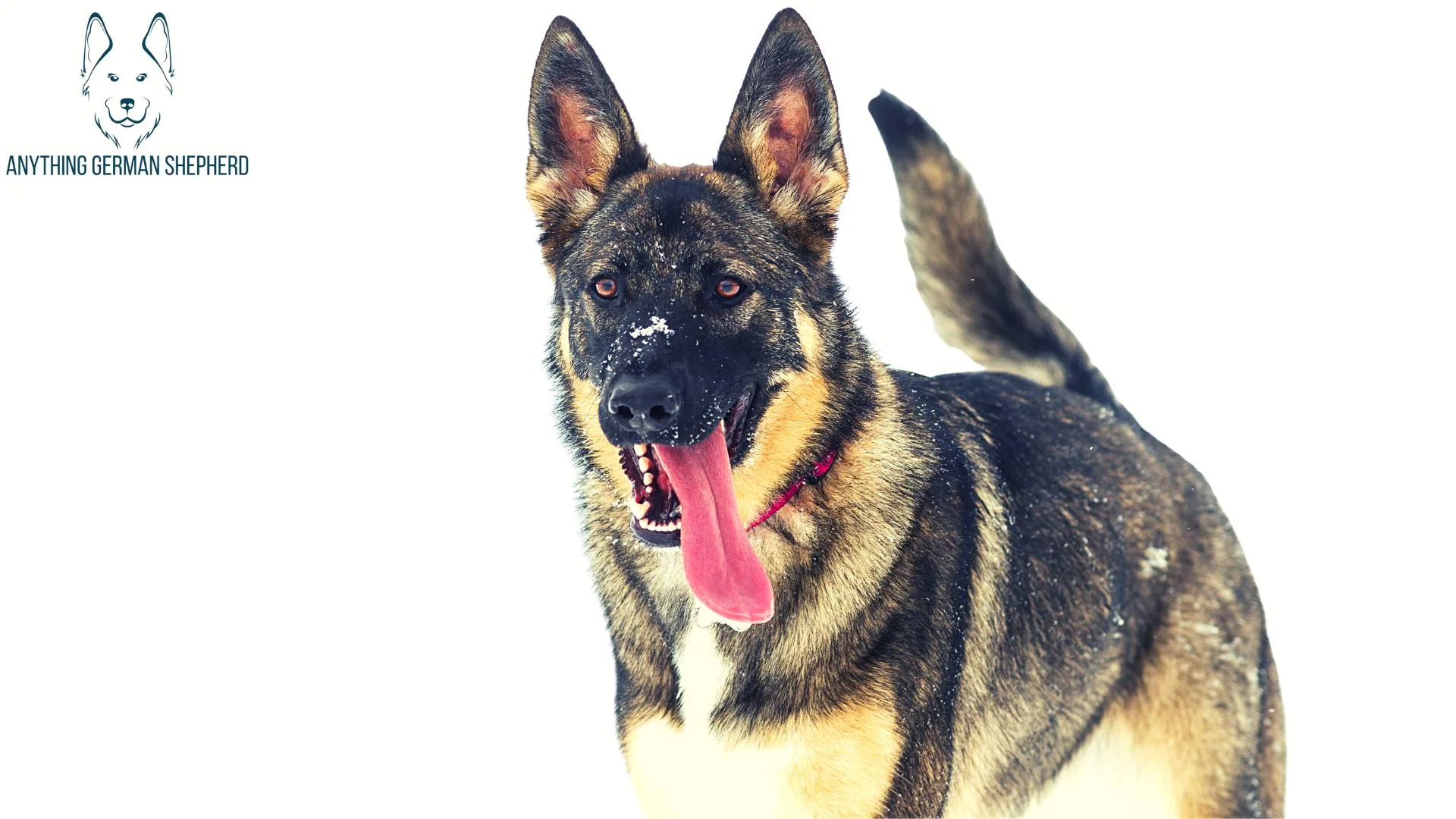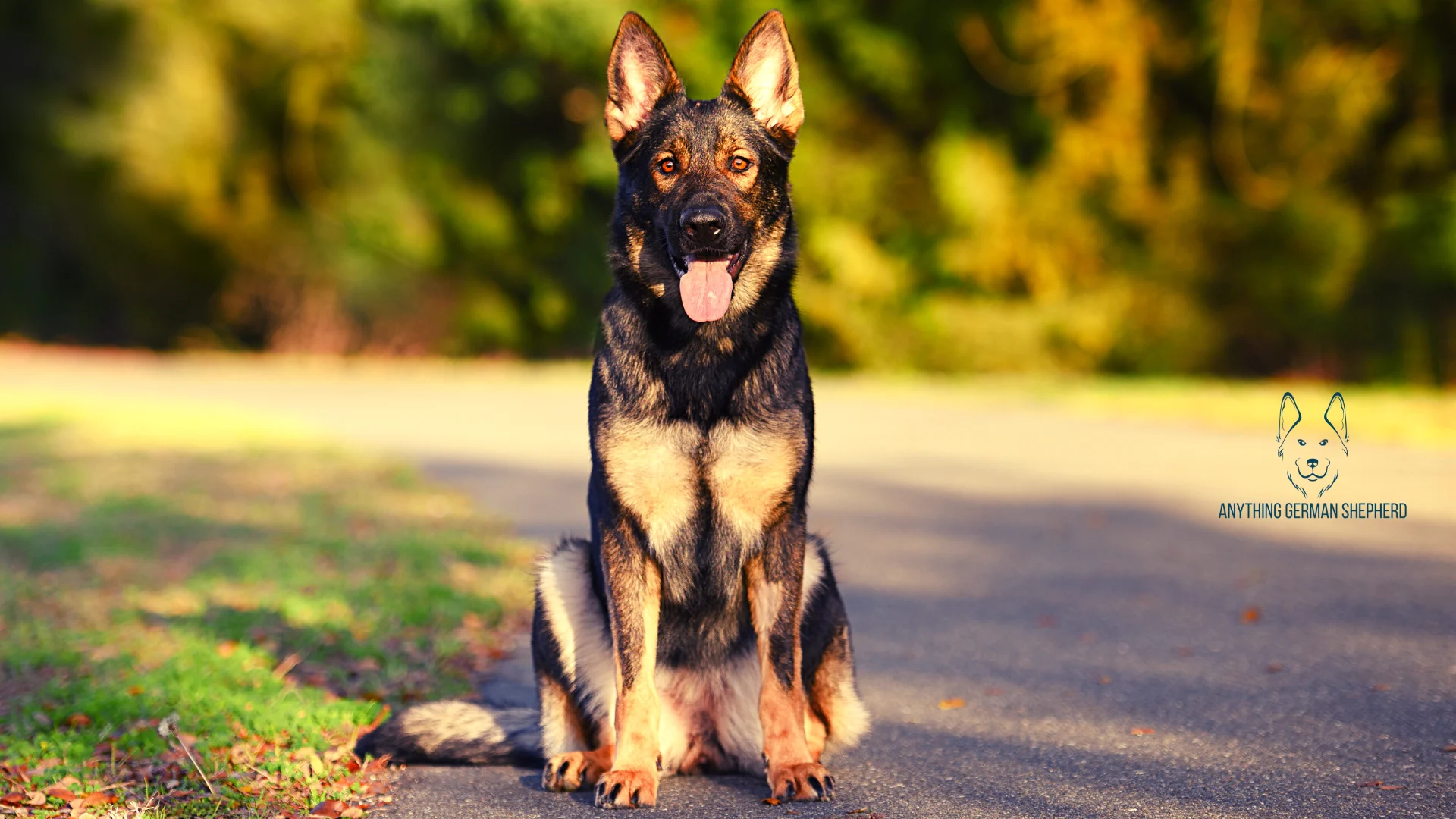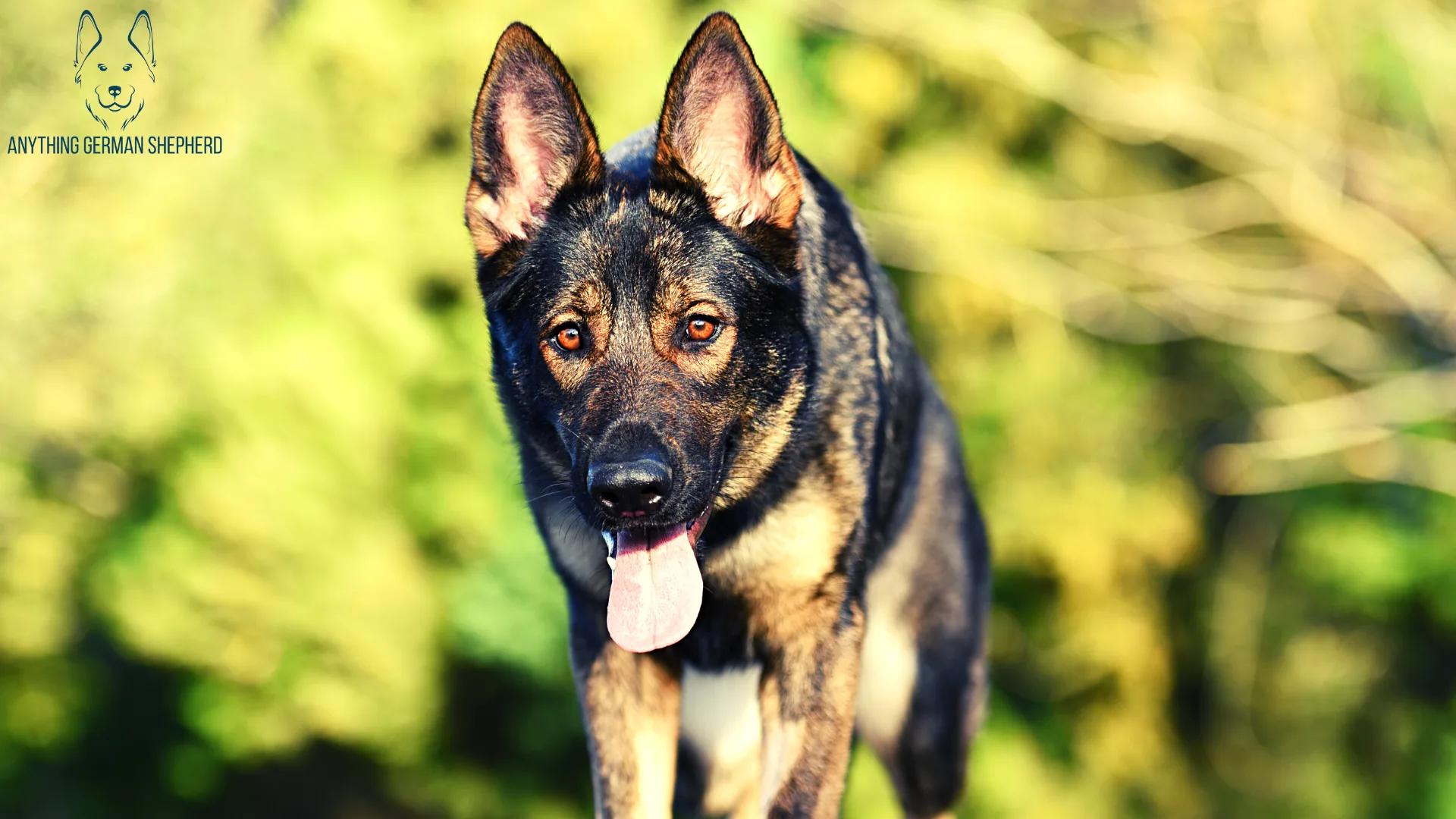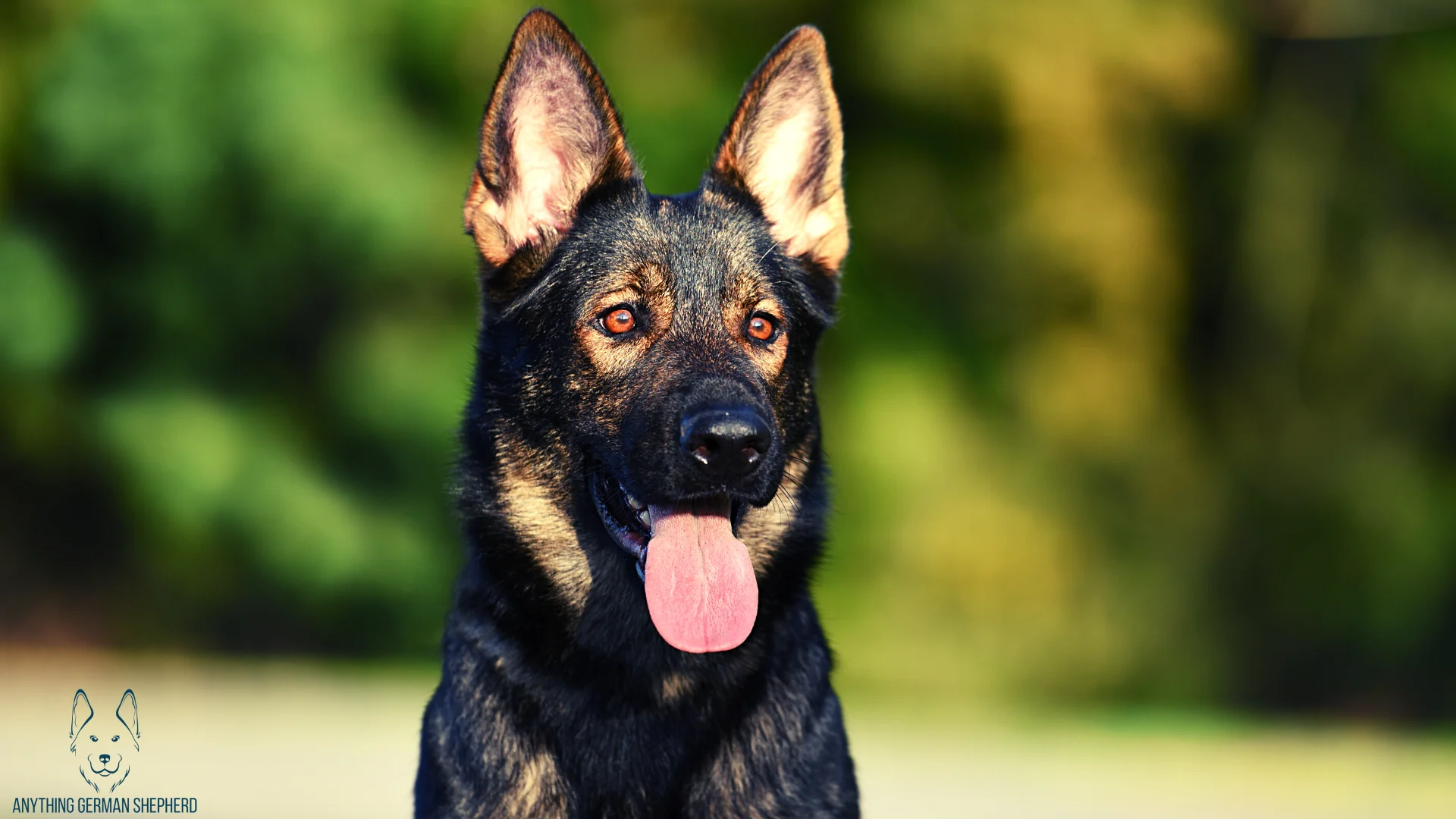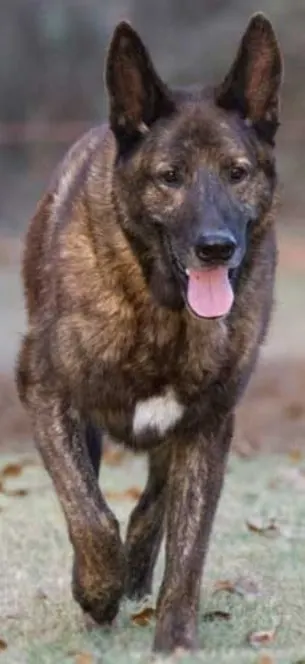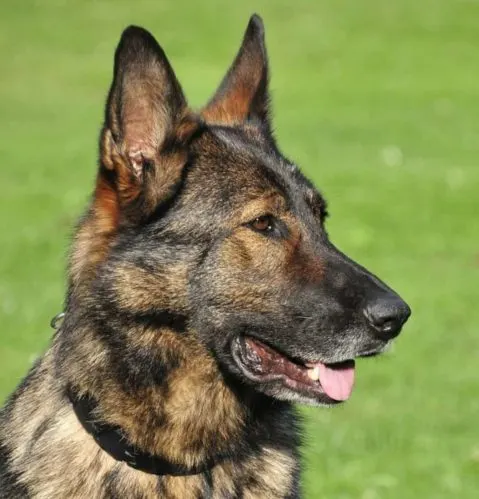Brindle German Shepherd: a Rare Coat Color for the Wildly Popular GSD
The subject of the brindle coat color pattern in German Shepherd dogs is one of intense debate and controversy.
Part of the reason for the controversy is due to current color trends and the close association between the brindle coloration and pit bulls.
The other part of the reason is simply that brindle is a non-standard color for the GSD.
Still another part of the reason is that the brindle gene itself is regarded as unstable genetically.
In this article, we will take a detailed look at the brindle German Shepherd and share the latest information about this unusual coat color.
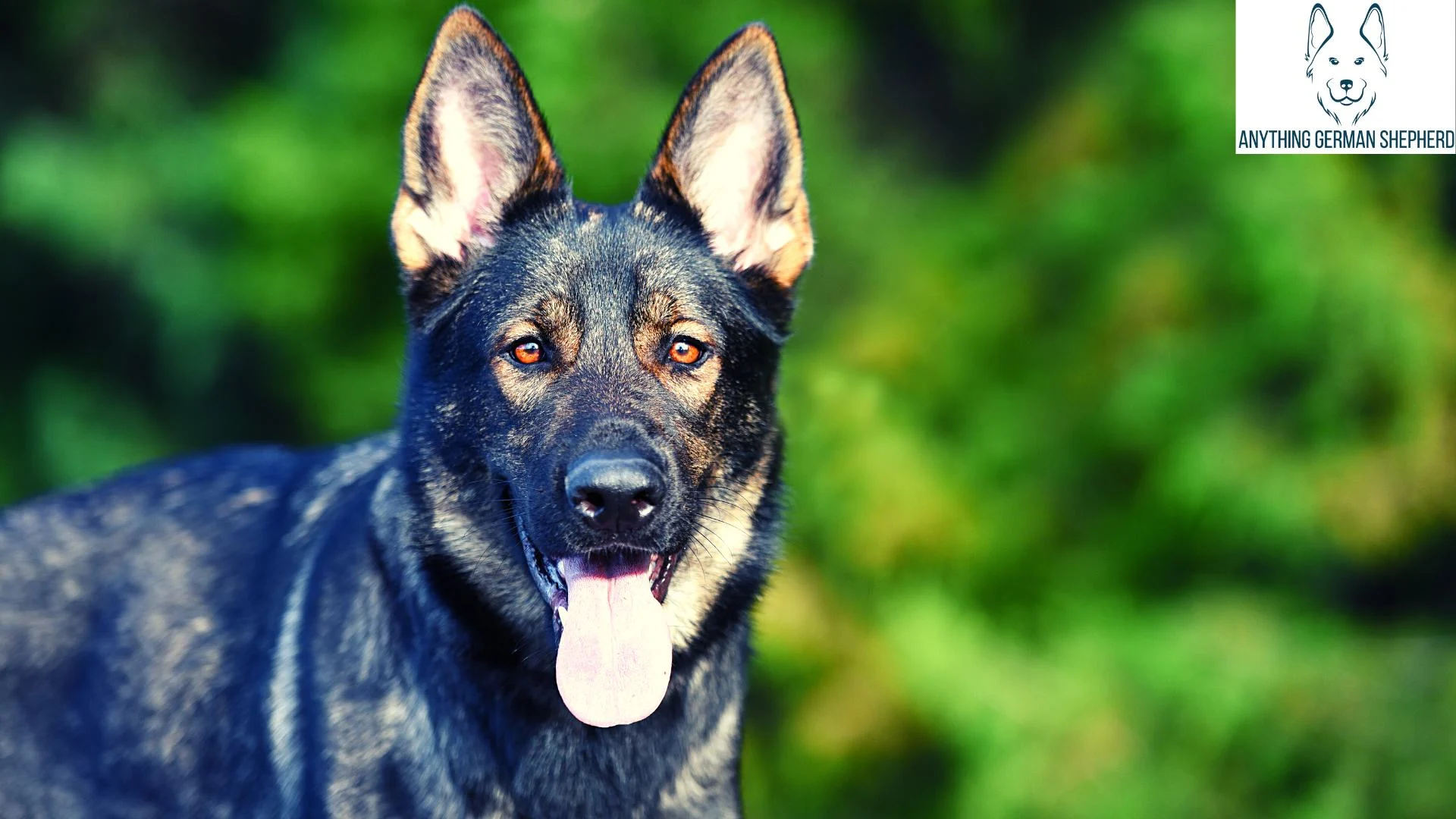
Brindle German Shepherd
The term brindle refers to a specific coat pattern or color made up of alternating stripes.
Brindle is often referred to as “tiger stripes” although the exact pattern can look very different depending on the genetics of each dog.
Even to the point where you might think two brindle coated dogs have two completely different coat patterns.
A Brindle German Shepherd is always going to be a rarity among mainstream GSD breeders.
This coat pattern is not even listed in the American Kennel Club (AKC) official breed standard registered with the AKC by the German Shepherd Dog Club of America.
What Creates the Brindle Color Pattern?
Earlier here we mentioned that the brindle coat pattern on one dog may look completely different from the brindle coat pattern on another dog.
This is because producing the brindle coat pattern requires a rather complex genetic process.
It is far more complex to breed a dog with a brindle coat pattern – especially a dog for whom brindle is not a standard coat color – than it is to breed a dog with a basic black or red coat color.
Two main color genes: eumelanin and phaeomelanin
There are two main color genes that all canines inherit: eumelanin and phaeomelanin.
Eumelanin controls for basic black and all the shades on that spectrum, which can manifest as anything from pale blue or silver all the way to stark black.
Phaeomelanin controls for basic red and all the various shades of red, which can range from palest liver or ivory all the way to burnished russet or brown.
Eumelanin also controls for nose, eye, and skin color while phaeomelanin controls only for coat color.
Additional color genes
The brindle coat pattern is considered a type of mosaicism, which is along the lines of the same type of gene expression that creates the complicated tortoiseshell coat pattern in cats.
According to Dog Coat Color Genetics, there can be tremendous variety in brindle coloration based on each of the following:
- Color intensity.
- Ticking.
- Stripe pattern.
- Stripe width.
- “Missing” stripes.
- Base color.
- Merle or harlequin gene influence.
- Dilution.
- White marking.
- Facial mask.
- Liver.
- Dilution.
- Greying.
- Fur type.
- Fur length.
- Brindle points and saddle markings.
The Four Main Brindle Color Patterns
The variation in brindle color patterns arises from a change in the underlying coat color gene – the base coat color.
There are four main base colors for German shepherd dogs:
1. Tan
The brindle German Shepherd with a tan base color can have a coat ranging from tan to blue, Isabella to the liver, or even black with brindle points.
2. Grey/silver
The brindle German Shepherd with a gray or silver base color may have very subtle or absent brindle coat pattern markings.
3. Sable/brown
The brindle German Shepherd with a sable or brown base color will likely appear to be a full brindle.
4. Black (recessive)
The brindle German Shepherd with a black (recessive) base coat color may look solid black, blue, Isabella, or liver because the recessive black coat gene inhibits color in the red spectrum from showing up.
Here, you can see that two of the base colors stem from genetic alterations to the eumelanin gene (black) and two of the base colors arise from genetic alterations to the phaeomelanin gene (red).
Brindle German Shepherd with a Mask
In addition to the four brindle color patterns described above here, it is also possible for a brindle dog to have a black mask.
As Dog Coat Color Genetics explains, this mask is only possible when the dog inherits a certain gene that acts on the eumelanin color gene to create more black coloration on the face, muzzle, and possibly the ears.
Brindle May Have Once Been a Standard German Shepherd Coat Color
As K-9 Pines German Shepherd breeder explains, there is some historical evidence that the very earliest German Shepherd dogs may have had brindle coat patterns.
As Wolf PAWS shows so clearly, wolf-dogs can have the brindle mask and coat pattern.
This is relevant because the founder of the German Shepherd dog breed, a German cavalry officer named Captain Max von Stephanitz, may well have used wolf-dog hybrids in the early stages of his breeding program.
Like the German Shepherd Dog Rescue charity highlights, Captain von Stephanitz famously stated again and again that his new dog breed, the German Shepherd, was created to become the perfect working dog.
For these purposes, appearance uniformity was secondary to trait and personality uniformity.
Because of this, Captain von Stephanitz’s early German Shepherds reportedly looked very unlike the purebred GSD of today.
To that point, the first official registered purebred German Shepherd dog, a dog called Horand von Grafrath, appears to have a brindle pattern in old black and white photographs.
Is Brindle the “Lost Pattern” in the German Shepherd Breed Line?
Because the “first GSD,” Captain von Stephanitz’s Horand von Grafrath, was said to have brindle coat markings, some GSD breeders are now calling brindle the “lost pattern” in the GSD lineage.
There is more than a little bit of historical evidence to support this hypothesis.
For example, many herding dogs in Europe had quite similar features and characteristics, including the brindle coat color pattern, which provides some natural protective properties in the form of color camouflage.
And here, it may be relevant that there is another dog breed, the Dutch Shepherd, that is commonly confused with the German Shepherd.
As this popular German Shepherd owners forum thread highlights, there may be another reason why the brindle coat pattern has disappeared from the GSD official AKC breed standard.
Infighting between different dog clubs may have caused a “divvying up” of the coat colors and patterns over time.
Still another possible explanation for the relative disappearance and thus rarity of the brindle German Shepherd dog today is that its original appearance came from early crossbreeding efforts and was bred out of the breed line for different reasons.
For example, many dog geneticists believe that the brindle gene, because of its complexity/mosaicism, is linked to other genes that encode (express or show up) for other traits.
It could be that the brindle gene is linked to other traits, such as personality or temperament traits, that are less desirable in a working dog breed such as the German Shepherd dog.
If this is the case, it may be that the brindle gene is difficult to breed for in German Shepherds because it shows up only upon occasion when there is an unintended crossbreeding that influences the genetic pool (the “dogs will be dogs” theory).
As the German Shepherd owner thread referenced above highlights, even German Shepherd breeders continue to speculate about where the brindle gene might be hiding and why it shows up so rarely and so erratically in litters today.
Brindle and Grizzled or Long Fur Coats in German Shepherds
Yet another unique aspect of the complex genetics required to create the brindle coat pattern is mutations in the normal fur length or type/texture.
The normal German Shepherd coat type is a medium-length, straight, double layer coat with a coarse, water-resistant outer layer and a shorter, denser, softer, and deeply insulating under layer.
Less common coat types include these:
- The wavy double layer coat.
- The long single layer coat.
- The long double-layer coat.
- The short double-layer coat.
The official GSD AKC breed standard states that any coat that is too wiry, soft, silky, woolly, curly, or open (single layer) is a breed fault but not an automatic disqualification.
In some dogs, a brindle coat pattern can co-occur with a more grizzled or wiry, non-standard fur texture – a texture more similar to wild wolves and wolf-dogs than to domestic modern canines.
The modern AKC purebred German Shepherd dog breed standard specifically states that an overly-long hair coat is considered a breeding fault.
However, some breeders today specialize in breeding long-hair German Shepherds.
However, the wiry coat texture is not considered a breed fault.
Rare or Exotic Brindle Coats in German Shepherd Dogs
Some German Shepherd breeders choose to focus their breeding programs to produce dogs with rare or exotic coat colors.
If you want to participate in AKC or other show dog competitions, it is important to understand that while these dogs may be healthy and sound in all other ways, you may not be allowed to show your rare or exotic-color German Shepherd in competitions.
This is because these exotic colors are frowned upon by breeders and dog clubs that favor focusing on the breed standard as-is.
Currently, the only officially accepted coat colors listed in the GSD official AKC breed standard include these:
- Black.
- Black and tan.
- Black and cream.
- Black and red.
- Black and silver.
- Blue.
- White.
- Liver.
- Gray.
- Sable.
Vom Geliebten Haus kennels and breeder has a great picture of these different coat colors and patterns to give you a better sense of the similarities and differences.
Contrast this list above with some of the many listings for exotic or rare German Shepherd puppy colors from breeder websites:
- Fawn and brindle.
- Sable and brindle.
- Blue fawn brindle.
- Black saddle brindle.
- Agouti (wolf gray/sable).
- Isabella/lilac.
However, even some so-called standard German Shepherd coat colors, such as blue, liver, black and white, are much rare than others.
To the point where breeders may choose to charge more for these coat colors even though they are considered standard colors.
Being born with a less common coat color does not necessarily mean these dogs have faulty genetics in any way.
It simply means the coat coloration is more difficult to produce deliberately without a deep knowledge of canine color genetics.
Consider the issue of the white, blue, liver, or so-called “washed out” coat colors – all of which are listed as “standard” in the official GSD breed standard.
Dogs with these coat colors will be judged at a fault to dogs with stronger, richer coat colors.
Dogs with white coats will be disqualified automatically.
Genetic Testing Is the Ultimate Determinant of GSD Health
According to the Orthopedic Foundation for Animals Canine Health Information Center (OFA-CHIC) database, German Shepherd dogs are known to be predisposed to the following heritable health issues:
- Hip dysplasia.
- Elbow dysplasia.
- Temperament issues.
- Cardiac issues.
- Eye issues.
- Degenerative myelopathy.
- Autoimmune thyroiditis.
According to the Center for Animal Genetics, the brindle gene in and of itself is not currently associated with any genetic or heritable health issues.
What this means is that, while some genes that can influence coloration are linked to serious health issues (the merle gene being one of the best-known of these), the brindle gene simply relates to the coating color pattern.
This is why it is far more important to make sure any breeder you buy your GSD puppy from has conducted a complete series of pre-screening health tests on the parent dogs to rule out passing on serious health issues to the puppies.
For example, hip and elbow dysplasia relate to malformation of the ball and joint socket.
Mild cases may require physical therapy and medication and major cases will always require surgery – a costly full canine hip or elbow joint replacement.
As long as your dog’s breeder can show you proof that all CHIC-required pre-screening tests have been completed and the parent dogs were healthy at the time of breeding, this is the most important criteria for picking a healthy puppy.
Is the Brindle German Shepherd a Healthy Dog?
This is a very important question to ask before making a lifelong commitment to any dog, including a purebred brindle German Shepherd dog.
The place to start, as we mentioned in the previous section here, is with the breeder’s own operation.
You want to make sure that the breeder can show proof that all required and recommended parent dog pre-screening genetic tests have been completed and the results are negative.
But these tests are not the only potential determinant of good health for a GSD puppy of any coat color.
If at all possible, you want to visit the breeder’s operation to see for yourself that it is not a puppy mill and that the kennel is clean, sanitary, and healthy overall for the dogs.
It is important to meet and interact with both parent dogs, as this will give you the best insight into your puppy’s potential personality and temperament in adulthood.
Any reputable breeder that places the health of the puppies ahead of all other traits, including coat color, should offer you the following additional guarantees:
– Guarantee of initial good health: this usually spans anywhere from six to 24 months and is typically contingent upon you having your own canine veterinarian do an initial “well puppy” exam within 24 to 72 hours after bringing your new puppy home.
– Proof that all required vaccinations, immunizations, and pest control have been done and dates for each.
– Proof of the purebred lineage of the parent dogs complete with AKC papers for your puppy.
Any breeder that willingly volunteers all of the above information is likely breeding GSDs with a health focus and is worth considering working with.
Should You Get a Brindle German Shepherd Dog?
Far too many dog owners today focus on finding a dog with a rare color over choosing a healthy puppy.
A brindle German Shepherd can make a great canine companion for the right person or family provided your new puppy is healthy underneath the coat.
See a Brindle German Shepherd
Because German Shepherds with the brindle coat color are so rare, it is unusual to even find a video of a true purebred Brindle GSD.
However, the brindle coat color is very common on a similar-looking purebred dog breed called the Dutch Shepherd.
In this short, sweet owner-made YouTube video, you can see the unusual and beautiful Brindle coat color on a German Shepherd mix dog.
























